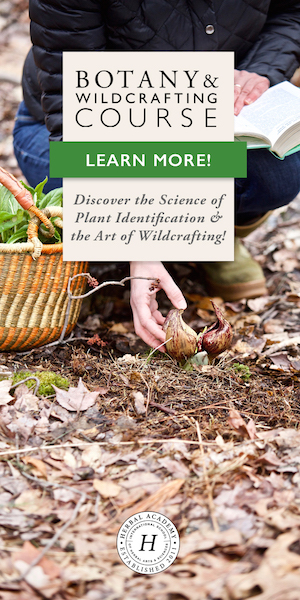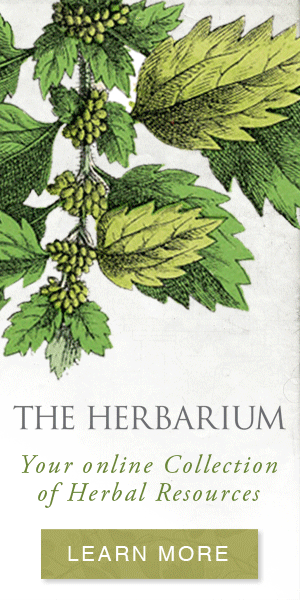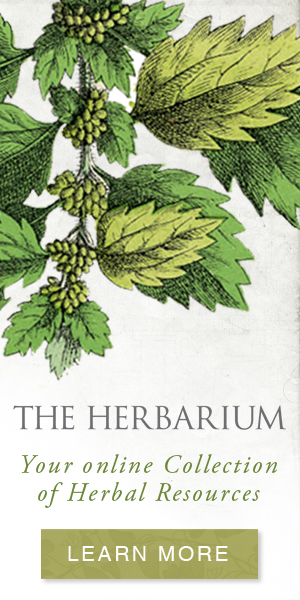 Exploring the great outdoors can unveil a treasure trove of culinary delights. As summer casts its vibrant spell, riverbanks become a sanctuary for various herbs that thrive in moist soil and gentle sunlight. Foraging for wild herbs not only connects us with nature but also allows us to discover flavors and aromas that cannot be replicated in cultivated varieties. In this article, we’ll delve into the enchanting world of riverbank foraging and highlight seven herbs you can seek out this summer to add a touch of wildness to your culinary adventures + 7 recipes you can use for tasty wild goodness!
Exploring the great outdoors can unveil a treasure trove of culinary delights. As summer casts its vibrant spell, riverbanks become a sanctuary for various herbs that thrive in moist soil and gentle sunlight. Foraging for wild herbs not only connects us with nature but also allows us to discover flavors and aromas that cannot be replicated in cultivated varieties. In this article, we’ll delve into the enchanting world of riverbank foraging and highlight seven herbs you can seek out this summer to add a touch of wildness to your culinary adventures + 7 recipes you can use for tasty wild goodness!
Herbs that grow by riverbanks often have specific characteristics that enable them to thrive in moist or wet environments. While the specific profile of herbs can vary depending on the region and climate, here are some general traits of herbs commonly found near riverbanks:
Riverbank herbs have adaptations that allow them to tolerate or even benefit from the wet conditions near water sources. They may have deep root systems to access water or the ability to withstand occasional flooding.
Due to the ample water supply, herbs by riverbanks often exhibit lush and vigorous growth. They may have larger leaves or taller stems compared to their counterparts in drier areas.
Many riverbank herbs possess aromatic properties, often characterized by strong scents or distinct flavors. These aromatic compounds may have medicinal benefits or act as natural insect repellents.
Several riverbank herbs are valued for their culinary applications. They can add unique flavors and aromas to dishes, enhancing the taste and aroma of various culinary creations.
Some riverbank herbs are not only safe to consume but also offer nutritional benefits. They may be rich in vitamins, minerals, and antioxidants, providing a source of nourishment in their leaves, stems, or roots.
Herbs by riverbanks play an important ecological role. They help stabilize the soil, prevent erosion, and provide habitat and food sources for various wildlife, insects, and aquatic species.
Examples of herbs commonly found near riverbanks include watercress, mint (such as peppermint and spearmint), meadowsweet, wild garlic mustard, nettles, and comfrey. However, it’s important to note that specific herbs can vary depending on the geographic location, climate, and local ecosystem. Before foraging or using any wild herbs, it’s essential to properly identify the plants and understand any potential risks or regulations associated with their collection and use.
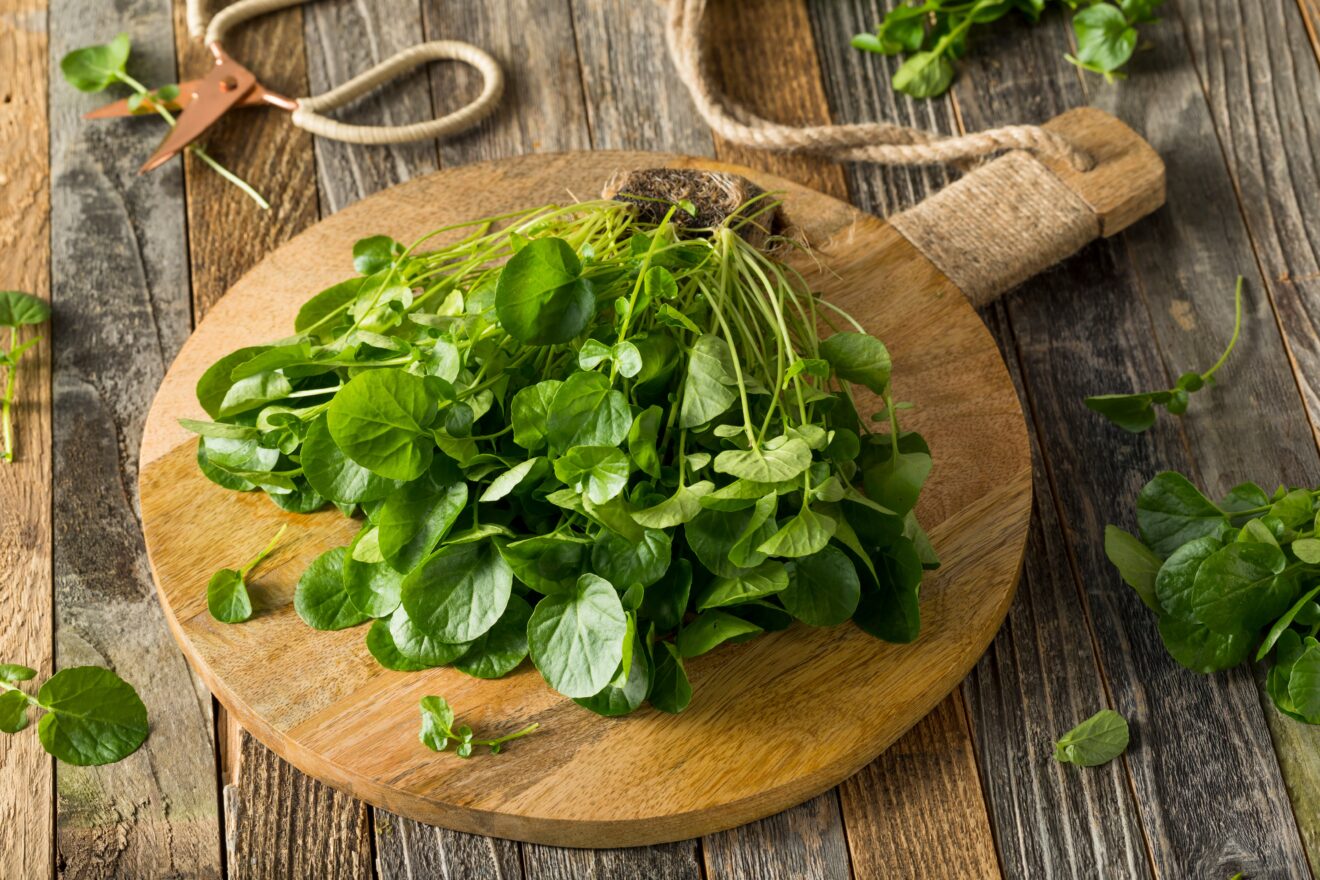
1. Watercress (Nasturtium officinale): A common sight along riverbanks, watercress is a nutrient-packed herb with a peppery taste. Rich in vitamins A, C, and K, it offers a refreshing addition to salads, sandwiches, and soups.
Consuming watercress can support immune function, promote healthy digestion, and aid in detoxification processes within the body. Its high vitamin C content helps boost the immune system, while vitamin K supports bone health and blood clotting.
The natural antioxidants present in watercress also contribute to its anti-inflammatory properties, making it beneficial for reducing inflammation and preventing chronic diseases. Additionally, the presence of dietary fiber aids in digestion and promotes a healthy gut microbiome, further enhancing overall well-being.
Incorporating watercress into your diet allows you to harness its medicinal benefits and embrace a nutritious and flavorful addition to your meals. Simply pluck the young, tender leaves, ensuring they come from clean water sources, and relish the invigorating flavors that Mother Nature has to offer.
Recipe:
Watercress and Strawberry Salad
Ingredients:
- 2 cups of fresh watercress, washed and trimmed
- 1 cup of strawberries, hulled and sliced
- 1/4 cup of crumbled feta cheese
- 2 tablespoons of toasted almonds, sliced
- 1 tablespoon of extra-virgin olive oil
- 1 tablespoon of balsamic vinegar
- Salt and pepper to taste
Instructions:
1. In a large bowl, combine the fresh watercress, sliced strawberries, crumbled feta cheese, and toasted almonds.
2. In a small bowl, whisk together the extra-virgin olive oil and balsamic vinegar. Season with salt and pepper to taste.
3. Drizzle the dressing over the watercress and strawberry mixture. Toss gently to coat all the ingredients evenly.
4. Transfer the salad to a serving platter or divide it among individual plates.
5. Serve the watercress and strawberry salad immediately as a refreshing and nutritious side dish or as a light, summery main course.
Note: You can customize this salad by adding additional ingredients like avocado slices, grilled chicken, or a sprinkle of your favorite herbs. Feel free to adjust the dressing ingredients and quantities to suit your taste preferences. Enjoy the vibrant flavors and the crisp, peppery bite of watercress in this delightful salad!

2. Wild Mint (Mentha arvensis): The aroma of wild mint wafting through the air is a sure sign of summer’s arrival. Its fresh, cool taste makes it a perfect ingredient for teas, cocktails, or desserts. Look for its vibrant green leaves along the riverbanks, and be transported to a realm of invigorating flavors with every sip or bite.
It is not just a refreshing herb that adds a burst of flavor to culinary creations; it also possesses several nutritional and medicinal benefits. Rich in essential nutrients, wild mint is a good source of vitamins A and C, as well as minerals like calcium, iron, and potassium. These nutrients contribute to its health-promoting properties, making it a valuable addition to your wellness routine.
Medicinally, wild mint is known for its digestive benefits. It has been used traditionally to alleviate indigestion, bloating, and gas. The natural compounds found in wild mint, such as menthol and menthone, have been shown to relax the muscles of the gastrointestinal tract, aiding in the smooth passage of food and reducing discomfort.
Furthermore, wild mint possesses antioxidant properties due to its high content of flavonoids and phenolic compounds. These antioxidants help protect the body against oxidative stress, reducing the risk of chronic diseases and supporting overall health.
The menthol present in wild mint leaves also provides a cooling and soothing effect. Inhalation of its aroma or application of mint-infused products can help relieve congestion and ease symptoms of respiratory conditions such as coughs and colds.
In summary, wild mint offers nutritional value through its vitamin and mineral content and provides medicinal benefits by supporting digestion, acting as an antioxidant, and soothing respiratory discomfort. Including wild mint in your diet or using it in natural remedies can be a refreshing way to enhance both your culinary experiences and overall well-being.
Recipe:
Wild Mint Infused Lemonade
Ingredients:
- 1 bunch of wildcrafted mint leaves
- 4 cups of water
- 1/2 cup of freshly squeezed lemon juice
- 1/4 cup of honey or preferred sweetener
- Ice cubes
Instructions:
1. Rinse the wildcrafted mint leaves under cold water to remove any dirt or debris. Gently pat them dry with a paper towel.
2. In a saucepan, bring 2 cups of water to a boil. Remove from heat and add the mint leaves. Let the leaves steep for about 10 minutes, allowing their flavors to infuse into the water.
3. After the mint has steeped, strain the liquid to remove the leaves, reserving the mint-infused water.
4. In a pitcher, combine the mint-infused water, freshly squeezed lemon juice, and honey (or preferred sweetener). Stir well until the honey is fully dissolved.
5. Add the remaining 2 cups of cold water to the pitcher and stir again to combine all the ingredients.
6. Place the pitcher in the refrigerator to chill for at least 1 hour, allowing the flavors to meld together.
7. Once chilled, serve the wild mint-infused lemonade over ice cubes in glasses. Garnish with a sprig of fresh mint, if desired.
8. Sip and enjoy the refreshing and invigorating flavors of this wildcrafted mint-infused lemonade on a hot summer day!
Note: You can adjust the sweetness or tartness of the lemonade by adding more or less honey and lemon juice according to your preference. Feel free to experiment with other additions like sliced fresh fruits, lavender, or a splash of sparkling water for a unique twist.
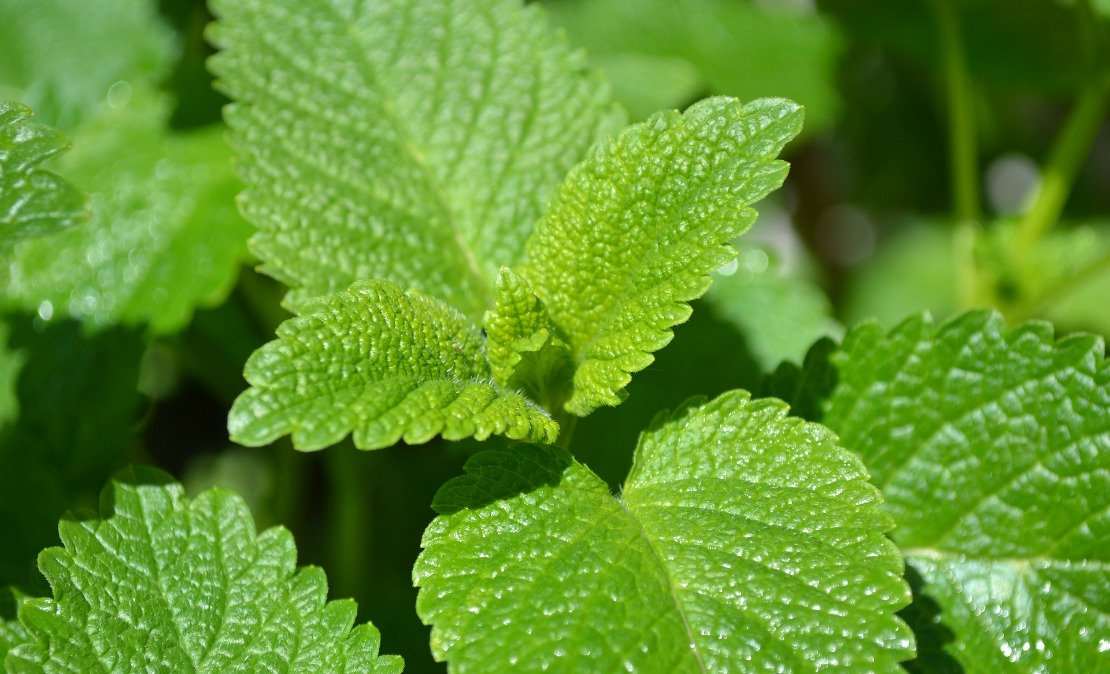
3. Lemon Balm (Melissa officinalis): Known for its uplifting scent and lemony flavor, lemon balm grows abundantly near water sources. The leaves can be used to infuse drinks, create flavorful syrups, or add a citrusy twist to salads and marinades. Enjoy the calming effects and zesty notes of this delightful herb that brightens up any dish.
Lemon balm contains various beneficial compounds, including vitamins, minerals, and antioxidants. It is a good source of vitamin C, which supports immune function and acts as an antioxidant in the body. Additionally, lemon balm contains essential minerals like calcium and potassium, which are important for maintaining healthy bones and regulating blood pressure.
Lemon balm has a long history of use as a natural remedy for anxiety and stress. It has calming properties that can help promote relaxation, ease tension, and improve sleep quality. Lemon balm is often used in herbal teas or aromatherapy to alleviate stress-related symptoms. It has been traditionally used to support healthy digestion. It can help soothe gastrointestinal discomfort, reduce bloating, and alleviate symptoms of indigestion. Drinking lemon balm tea or using it as a culinary herb may help promote better digestion.
Lemon balm possesses antiviral properties, particularly against certain strains of herpes viruses. It is often used topically to help reduce the duration and severity of cold sores. Additionally, the antioxidants present in lemon balm can support overall immune function, helping the body defend against common infections.
Lemon balm has been studied for its potential cognitive benefits. It may help improve memory, concentration, and overall cognitive function. Some research suggests that lemon balm extract may have a positive impact on age-related cognitive decline, although more studies are needed to confirm these effects.
Lemon balm contains antioxidants that can help protect cells from oxidative damage and reduce inflammation in the body. These properties contribute to its potential in supporting overall health and reducing the risk of chronic diseases.
It’s important to note that while lemon balm is generally considered safe for most individuals, it may interact with certain medications or have mild side effects for some people. It’s recommended to consult with a healthcare professional before using lemon balm for medicinal purposes, especially if you have any underlying health conditions or are taking medications.
Recipe:
Lemon Balm Infused Iced Tea
Ingredients:
- 4 cups of water
- 4-6 lemon balm sprigs
- 2-3 teaspoons of honey or preferred sweetener (optional)
- Slices of lemon (optional)
- Ice cubes
Instructions:
1. In a saucepan, bring 4 cups of water to a boil.
2. Once the water reaches a boil, remove it from heat and add the lemon balm sprigs to the pot. Let them steep for about 10-15 minutes to infuse the water with the lemon balm’s flavors and aromas.
3. After steeping, strain the liquid to remove the lemon balm leaves, reserving the infused water.
4. If desired, add honey or your preferred sweetener to the infused water and stir until it dissolves. Adjust the sweetness to taste.
5. Allow the infused tea to cool to room temperature, then transfer it to a pitcher and refrigerate until chilled.
6. To serve, pour the lemon balm-infused tea into glasses filled with ice cubes. Optionally, garnish each glass with a slice of lemon for an extra burst of citrus flavor.
7. Sip and enjoy the refreshing and soothing qualities of this lemon balm-infused iced tea. It’s a perfect way to stay cool and uplifted during warm summer days!
Note: Feel free to experiment with the recipe by adding other complementary herbs or fruits, such as mint leaves or slices of fresh strawberries, for additional flavor variations. You can also adjust the sweetness by adding more or less sweetener according to your taste preferences.
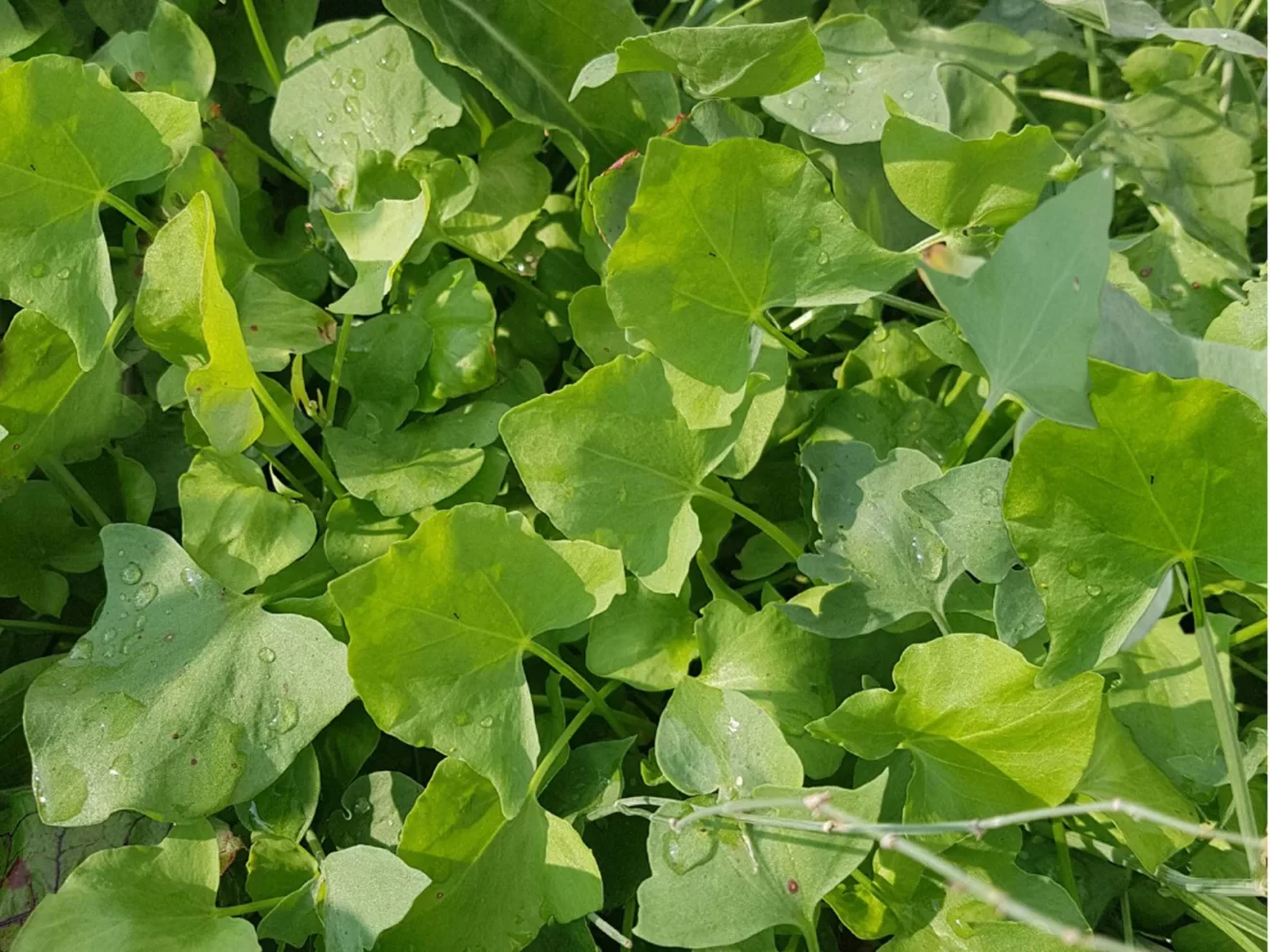
4. Sorrel (Rumex acetosa): With its distinctive tart flavor, sorrel brings a tangy punch to culinary creations. Its arrow-shaped leaves can be used in salads, soups, or sauces, imparting a delightful acidity. Harvest the young leaves from riverbanks and let your taste buds savor the vibrant, lemony essence that sorrel provides.
Sorrel is a good source of vitamins, minerals, and antioxidants. It is particularly rich in vitamin C, which is important for immune function, collagen synthesis, and antioxidant protection. Sorrel also contains vitamin A, vitamin K, and several B vitamins. Additionally, it provides minerals like potassium, magnesium, and calcium.
Sorrel has been traditionally used to support digestive health. It contains compounds, including oxalic acid, that stimulate the production of digestive enzymes and promote healthy digestion. Sorrel is known for its natural laxative properties, which may help alleviate constipation and improve bowel regularity.
Sorrel is rich in antioxidants, such as flavonoids and phenolic compounds, that help protect cells against oxidative stress and inflammation. These properties contribute to the herb’s potential in reducing the risk of chronic diseases, such as heart disease and certain types of cancer.
Due to its nutrient content, sorrel can contribute to overall nutritional support. The presence of vitamins, minerals, and antioxidants helps maintain optimal health, supports immune function, and promotes healthy bones and tissues.
Sorrel has diuretic effects, meaning it can increase urine production and promote the elimination of toxins and excess fluids from the body. This can be beneficial for individuals with conditions like edema or high blood pressure, as it may help reduce fluid retention and support healthy kidney function.
In traditional herbal medicine, sorrel has been used to alleviate various conditions, including fever, inflammation, and scurvy. However, it’s important to note that these traditional uses may require further scientific research for validation.
While sorrel offers several health benefits, it’s worth mentioning that it contains oxalic acid, which in large quantities may interfere with mineral absorption or potentially contribute to kidney stone formation in susceptible individuals. If you have a history of kidney issues or are prone to kidney stones, it’s advisable to moderate your consumption of sorrel or consult a healthcare professional.
As with any herb or medicinal plant, it’s essential to use sorrel in moderation and in consultation with a healthcare professional, especially if you have any underlying health conditions or are taking medications.
Recipe:
Creamy Sorrel Soup
Ingredients:
- 2 cups sorrel leaves, washed and chopped
- 1 tablespoon butter or olive oil
- 1 medium onion, chopped
- 2 cloves garlic, minced
- 4 cups vegetable or chicken broth
- 1 medium potato, peeled and diced
- 1/2 cup heavy cream or coconut cream (for a dairy-free option)
- Salt and pepper to taste
- Fresh chives or sorrel leaves for garnish (optional)
Instructions:
1. In a large pot, heat the butter or olive oil over medium heat. Add the chopped onion and minced garlic, and sauté until the onion becomes translucent and fragrant.
2. Add the diced potato to the pot and continue to sauté for another 2-3 minutes, stirring occasionally.
3. Pour in the vegetable or chicken broth, and bring the mixture to a boil. Reduce the heat to low and let it simmer for about 10 minutes, or until the potato is tender.
4. Add the chopped sorrel leaves to the pot and simmer for an additional 2-3 minutes, allowing the sorrel to wilt and infuse its flavors into the soup.
5. Using an immersion blender or transferring the mixture to a countertop blender, blend the soup until smooth and creamy.
6. Return the blended soup to the pot, and stir in the heavy cream or coconut cream. Heat the soup gently, but do not boil. Season with salt and pepper to taste.
7. Ladle the creamy sorrel soup into bowls and garnish with fresh chives or sorrel leaves, if desired.
8. Serve the soup hot and enjoy its tangy, herbaceous flavors with crusty bread or a side salad for a delightful and nourishing meal.
Note: Adjust the thickness of the soup by adding more broth or cream to achieve your desired consistency. You can also add a squeeze of fresh lemon juice for an extra citrusy kick. Experiment with garnishes like croutons or a drizzle of olive oil for added texture and flavor.
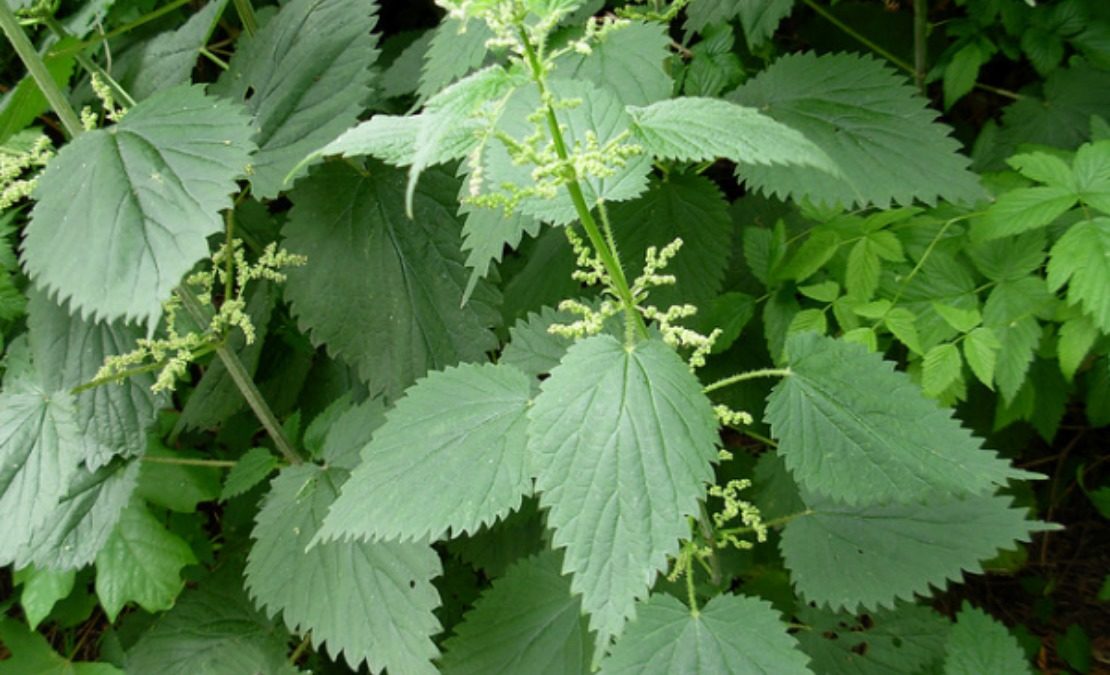
5. Nettles (Urtica dioica): Despite their notorious sting, nettles offer a wealth of health benefits and culinary possibilities. Wearing gloves, gather the young, tender leaves, and once cooked or blanched, their stinging properties are neutralized. Rich in iron and vitamins, nettles can be transformed into soups, teas, or sautéed greens, providing a nourishing and revitalizing addition to your summer meals. This one is my favorite as someone who struggles with frequent tonsil stones. Drinking nettle tea really dissolves them due to the astringent and antimicrobial properties.
Nettles (Urtica dioica) may be known for their stinging properties, but they also offer numerous nutritional and medicinal benefits. Rich in vitamins, minerals, and bioactive compounds, nettles have been used for centuries in traditional medicine for various purposes.
Nettles are highly nutritious and are particularly rich in the following nutrients:
Nettles contain vitamins A, C, and K, which play essential roles in supporting immune function, vision health, collagen synthesis, and blood clotting. They are a good source of minerals like iron, calcium, magnesium, and potassium, which are vital for maintaining healthy bones, muscles, and proper cell function. Nettles provide a moderate amount of plant-based protein, making them a valuable addition to a vegetarian or vegan diet. Nettles contain antioxidant compounds, such as flavonoids and phenolic acids, which help protect cells from oxidative stress and reduce inflammation in the body.
Nettles have been traditionally used to relieve symptoms of allergies, including hay fever. They may help reduce inflammation and inhibit the release of histamine, which contributes to allergy symptoms. Some studies suggest that nettle supplements or extracts may provide relief for seasonal allergies.
Nettles are believed to possess anti-inflammatory properties that can help alleviate joint pain and inflammation associated with conditions like arthritis. Applying nettle topically or consuming nettle tea or supplements may provide relief for joint discomfort.
Nettles have diuretic properties, meaning they promote urine production and can help flush out toxins and support kidney health. This diuretic effect may be beneficial for individuals with urinary tract infections or fluid retention issues.
Some studies suggest that nettles may help regulate blood sugar levels. Certain compounds in nettles may contribute to improved glucose metabolism and insulin sensitivity. However, more research is needed to confirm these effects.
Including nettles in your diet can provide a nutritional boost due to their high content of vitamins, minerals, and antioxidants. Consuming nettle-infused teas or incorporating cooked nettles into meals can help support overall health and well-being.
As with any herbal remedy, it’s advisable to consult with a healthcare professional before using nettles for medicinal purposes, especially if you have underlying health conditions, are taking medications, or are pregnant or breastfeeding. Nettles should be harvested or consumed with caution using gloves to avoid stinging hairs, and cooking or drying the leaves removes the sting.
Recipe:
Nettle Pesto Pasta
Ingredients:
- 2 cups fresh nettle leaves, washed and blanched
- 1/2 cup grated Parmesan cheese (or nutritional yeast for a vegan option)
- 1/4 cup toasted pine nuts (or walnuts)
- 2 cloves garlic, peeled
- Juice of 1/2 lemon
- 1/3 cup extra-virgin olive oil
- Salt and pepper to taste
- 8 ounces pasta of your choice
- Optional: additional grated Parmesan cheese for serving
Instructions:
1. Using gloves, harvest or purchase fresh nettle leaves. Rinse them thoroughly under cold water to remove any dirt or debris.
2. Bring a large pot of water to a boil. Carefully add the nettle leaves to the boiling water and blanch them for about 1 minute. This process will neutralize the stinging properties of the nettles. Drain and rinse the blanched nettles under cold water to cool them down.
3. In a food processor, combine the blanched nettles, grated Parmesan cheese (or nutritional yeast), toasted pine nuts (or walnuts), garlic cloves, lemon juice, and a pinch of salt and pepper. Pulse until the ingredients are well combined.
4. With the food processor running, slowly drizzle in the olive oil until a smooth pesto-like consistency is achieved. You may need to scrape down the sides of the processor bowl a few times to ensure everything is evenly mixed.
5. Cook the pasta according to the package instructions until al dente. Reserve about 1/4 cup of the pasta cooking water, then drain the pasta.
6. In a large bowl, combine the cooked pasta, nettle pesto, and a splash of the reserved pasta cooking water. Toss well to coat the pasta evenly with the pesto. If desired, adjust the consistency by adding more pasta cooking water.
7. Taste the pasta and season with additional salt and pepper, if needed. Serve the nettle pesto pasta hot, garnished with a sprinkle of grated Parmesan cheese, if desired.
Note: Nettle pesto can be stored in an airtight container in the refrigerator for a few days or frozen for longer storage. Feel free to customize the recipe by adding other ingredients like cherry tomatoes, chicken, sautéed mushrooms, or roasted vegetables. Enjoy the unique and vibrant flavors of this nourishing nettle pesto pasta!

6. Meadowsweet (Filipendula ulmaria): Often found in damp areas near rivers, meadowsweet is an herb renowned for its delicate, sweet aroma reminiscent of almond and honey. The flowers can be infused to create fragrant teas, syrups, or desserts, adding a touch of enchantment to your culinary creations.
Meadowsweet is a flowering herb that has been used for centuries for its nutritional and medicinal benefits. This herb contains various bioactive compounds that contribute to its health-promoting properties.
Meadowsweet contains essential vitamins and minerals that support overall health. It is a good source of vitamin C, which plays a crucial role in immune function, collagen synthesis, and antioxidant protection. Additionally, meadowsweet provides minerals such as calcium, magnesium, and potassium, which are important for bone health, muscle function, and electrolyte balance.
Meadowsweet contains salicylates, natural compounds with anti-inflammatory and analgesic properties. These compounds have been traditionally used to alleviate pain and reduce inflammation associated with conditions like headaches, joint pain, and menstrual cramps. However, individuals with aspirin sensitivity or on blood-thinning medications should exercise caution when consuming meadowsweet due to its salicylate content.
Meadowsweet has been used to support digestive health for centuries. It contains tannins, flavonoids, and other compounds that can help soothe digestive discomfort, reduce acidity, and promote healthy digestion. It may be beneficial for conditions like acid reflux, heartburn, and indigestion.
Meadowsweet has been traditionally used to relieve respiratory symptoms. Its anti-inflammatory properties may help soothe irritated airways and alleviate coughs and congestion. It has also been used as an expectorant, helping to promote the clearance of mucus from the respiratory system.
The natural compounds found in meadowsweet, including flavonoids and phenolic acids, have antioxidant and anti-inflammatory effects that may benefit the skin. Meadowsweet extracts or topical preparations are believed to help soothe irritated skin, reduce redness, and support overall skin health.
Meadowsweet has diuretic properties, meaning it can increase urine production and promote the elimination of toxins and excess fluids from the body. It has been used traditionally to support urinary health and may help with conditions such as urinary tract infections and fluid retention.
It’s important to note that while meadowsweet has a long history of traditional use and is generally considered safe, it may interact with certain medications or have mild side effects for some individuals. It’s advisable to consult with a healthcare professional before using meadowsweet for medicinal purposes, especially if you have any underlying health conditions or are taking medications.
Recipe:
Meadowsweet Infused Herbal Tea
Ingredients:
- 2 cups water
- 1 tablespoon dried meadowsweet flowers and leaves
- Honey or preferred sweetener (optional)
- Lemon slices (optional)
Instructions:
1. In a small saucepan, bring the water to a gentle boil.
2. Add the dried meadowsweet flowers and leaves to the boiling water, and reduce the heat to low. Let the mixture simmer for about 5 minutes, allowing the flavors and aromas of meadowsweet to infuse into the water.
3. After simmering, remove the saucepan from heat and cover it with a lid. Let the meadowsweet steep in the water for an additional 5 minutes.
4. Strain the tea into a teapot or directly into cups, using a fine-mesh strainer or a tea infuser to remove the plant material.
5. If desired, sweeten the tea with honey or your preferred sweetener, stirring until it dissolves. Adjust the sweetness to your liking.
6. Serve the meadowsweet-infused herbal tea hot. Optionally, garnish each cup with a slice of lemon for a touch of citrus flavor and additional freshness.
7. Sit back, relax, and enjoy the soothing and aromatic qualities of this meadowsweet tea. Take a moment to appreciate the gentle flavors and the potential health benefits it provides.
Note: You can experiment with the strength of the tea by adjusting the amount of meadowsweet used and the steeping time according to your preference. Feel free to add other herbs or spices like chamomile, lavender, or cinnamon for a personalized blend. This herbal tea can also be enjoyed chilled by refrigerating it until cool and serving it over ice for a refreshing summer beverage.
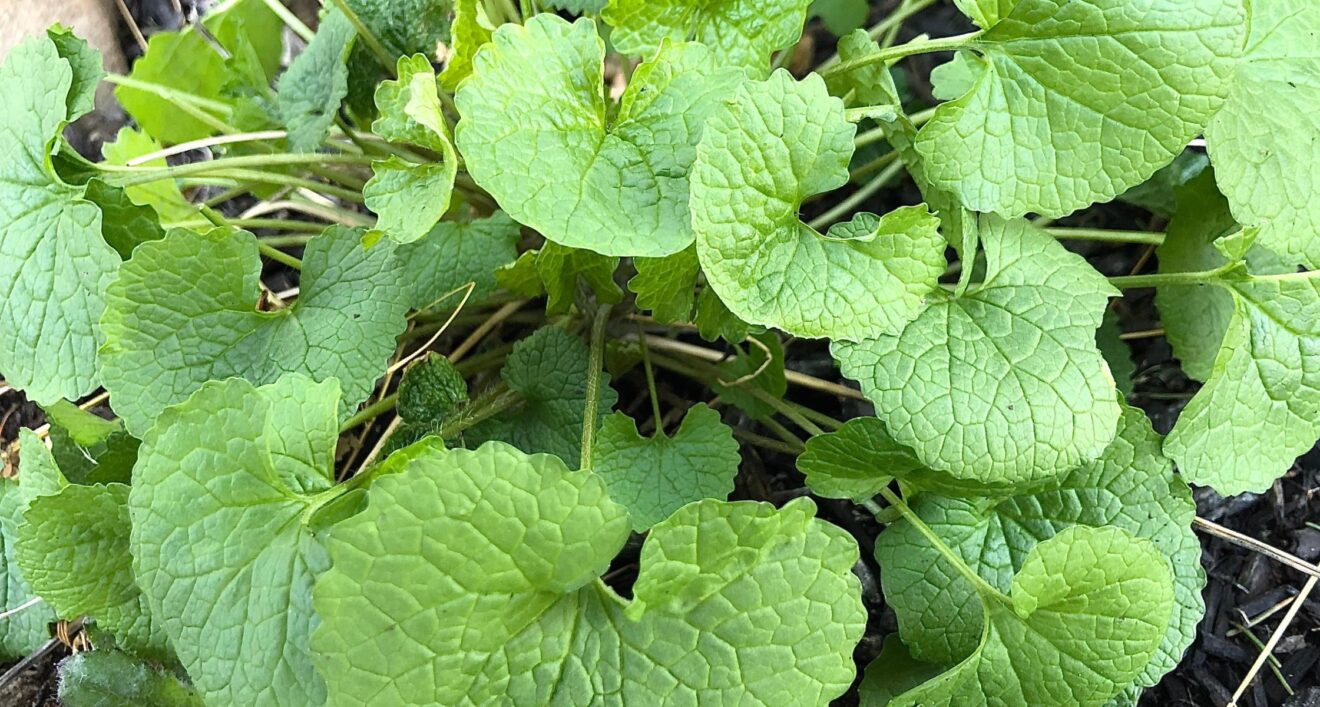
7. Garlic Mustard (Alliaria petiolata): This pungent herb is a prolific invader along riverbanks and possesses a distinct garlic and mustard flavor. Its leaves can be utilized in salads, pestos, or sautéed dishes, providing a wild twist to your recipes. As you harvest this herb, you also contribute to managing its invasive growth, making it a win-win for both culinary exploration and environmental conservation.
Venturing along riverbanks during the summer months opens up a world of herbal treasures. As you forage for watercress, wild mint, lemon balm, sorrel, nettles, meadowsweet, and garlic mustard, you embark on a flavorful journey that connects you to nature’s abundance. Remember to forage responsibly, ensure proper identification, and harvest with care. By embracing the wonders of riverbank foraging, you not only elevate your culinary experiences but also cultivate a deep appreciation for the natural world and its bountiful offerings.
Wild garlic mustard leaves are a good source of vitamins and minerals. They are rich in vitamins A and C, which support immune function and promote healthy skin. Additionally, they provide minerals like calcium, potassium, and iron, which are essential for bone health, muscle function, and oxygen transportation within the body.
Wild garlic mustard contains antioxidants, including phenolic compounds, which help protect cells from oxidative damage caused by free radicals. Antioxidants support overall health and may play a role in reducing the risk of chronic diseases.
Some studies suggest that wild garlic mustard may have cardiovascular benefits. It has been found to possess potential cholesterol-lowering properties, which can contribute to heart health when consumed as part of a balanced diet.
Garlic mustard has a history of traditional use in herbal medicine. It has been used as a digestive aid, diuretic, and expectorant. However, more research is needed to validate these traditional uses and determine their efficacy.
Wild garlic mustard is valued for its culinary applications. The leaves have a distinct garlicky flavor that can enhance the taste of various dishes. Incorporating wild garlic mustard into your meals can add depth and unique flavor profiles to salads, pestos, soups, and more.
Recipe:
Wild Garlic Mustard and Potato Soup
Ingredients:
- 2 cups wild garlic mustard leaves, washed and chopped
- 2 tablespoons olive oil
- 1 onion, chopped
- 2 cloves garlic, minced
- 3 medium potatoes, peeled and diced
- 4 cups vegetable or chicken broth
- 1/2 cup heavy cream or coconut cream (for a dairy-free option)
- Salt and pepper to taste
- Fresh chives or wild garlic mustard flowers for garnish (optional)
Instructions:
1. In a large pot, heat the olive oil over medium heat. Add the chopped onion and minced garlic, and sauté until the onion becomes translucent and fragrant.
2. Add the diced potatoes to the pot and continue to sauté for another 2-3 minutes, stirring occasionally.
3. Pour in the vegetable or chicken broth, and bring the mixture to a boil. Reduce the heat to low, cover the pot, and let it simmer for about 15-20 minutes or until the potatoes are tender.
4. Add the chopped wild garlic mustard leaves to the pot and simmer for an additional 2-3 minutes, allowing the leaves to wilt and infuse their flavors into the soup.
5. Using an immersion blender or transferring the soup to a countertop blender, blend the soup until smooth and creamy.
6. Return the blended soup to the pot, and stir in the heavy cream or coconut cream. Heat the soup gently, but do not let it come to a boil. Season with salt and pepper to taste.
7. Ladle the wild garlic mustard and potato soup into bowls and garnish with fresh chives or wild garlic mustard flowers, if desired.
8. Serve the soup hot and enjoy the unique and earthy flavors of this nourishing wild garlic mustard and potato soup.
Note: Adjust the thickness of the soup by adding more broth if needed. You can also add additional seasonings such as herbs or spices to further enhance the flavor profile. Pair this soup with bread or a side salad for a satisfying meal.
I hope you enjoyed these recipes and learning the nutritional benefits of these wild plants as much as I did! Let me know in the comments below if you tried any of these out. Check out the links below for foraging gear and access to the Foraging Course to learn more about foraging and wildcrafting. Happy foraging!
Foraging Gear:
These are affiliate links, so I make a commission at no cost to you.
References:
- “A Field Guide to Edible Wild Plants of Eastern and Central North America” by Lee Peterson
- “The Forager’s Harvest: A Guide to Identifying, Harvesting, and Preparing Edible Wild Plants” by Samuel Thayer
- “Identifying and Harvesting Edible and Medicinal Plants” by Steve Brill and Evelyn Dean
- “The River Cottage Hedgerow Handbook” by John Wright
- “Nature’s Garden: A Guide to Identifying, Harvesting, and Preparing Edible Wild Plants” by Samuel Thayer
- “Botany in a Day: The Patterns Method of Plant Identification” by Thomas J. Elpel

